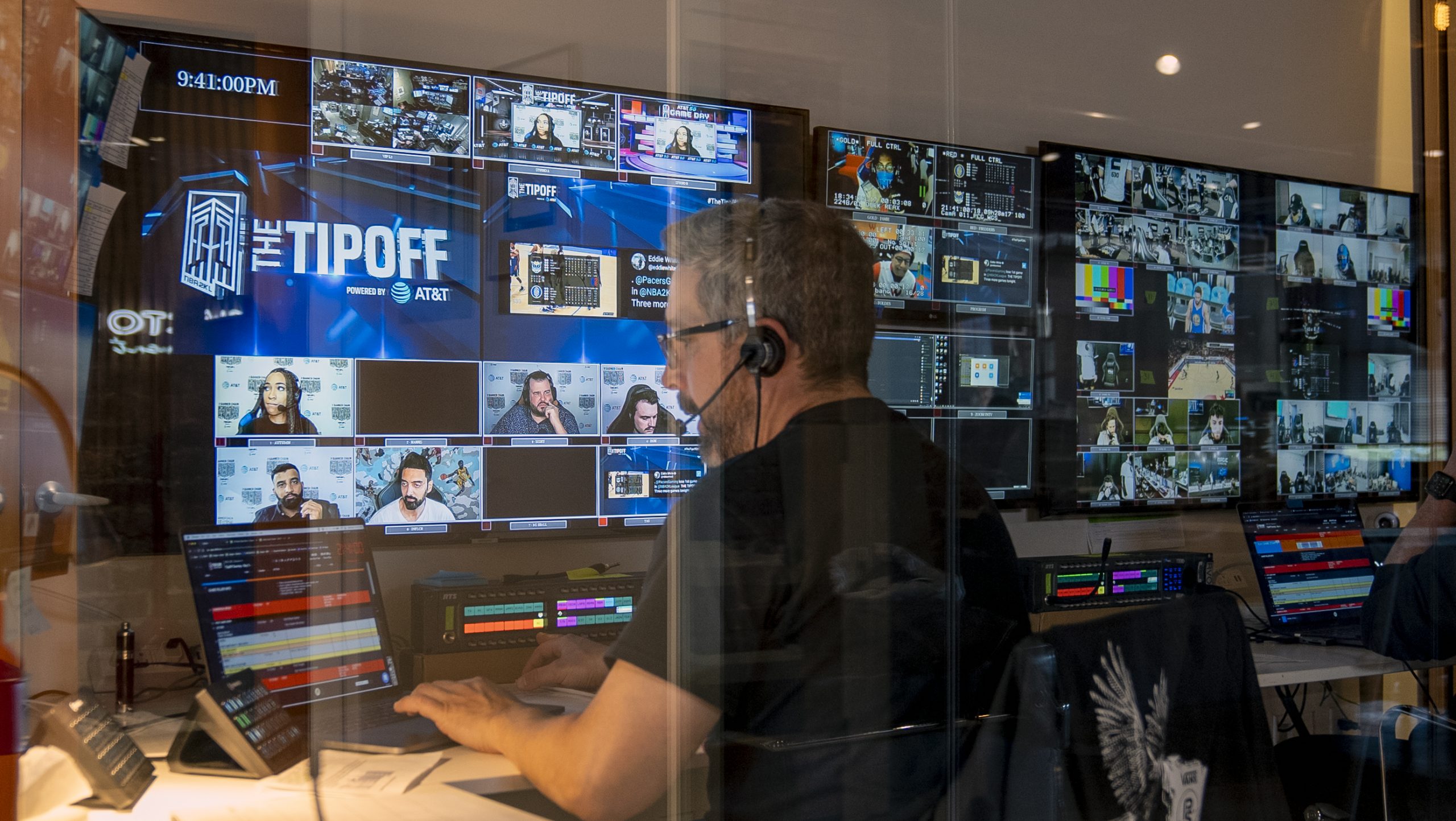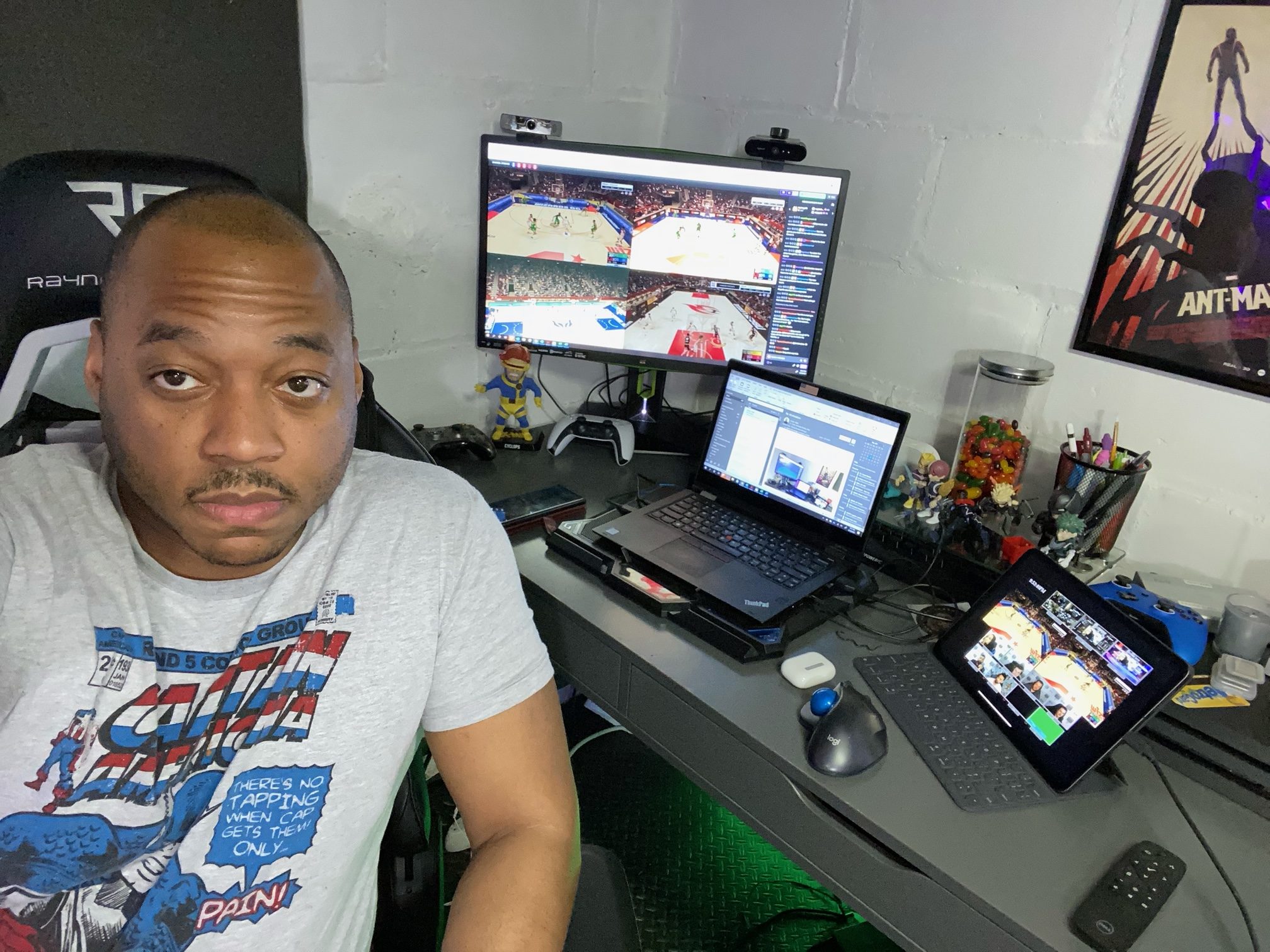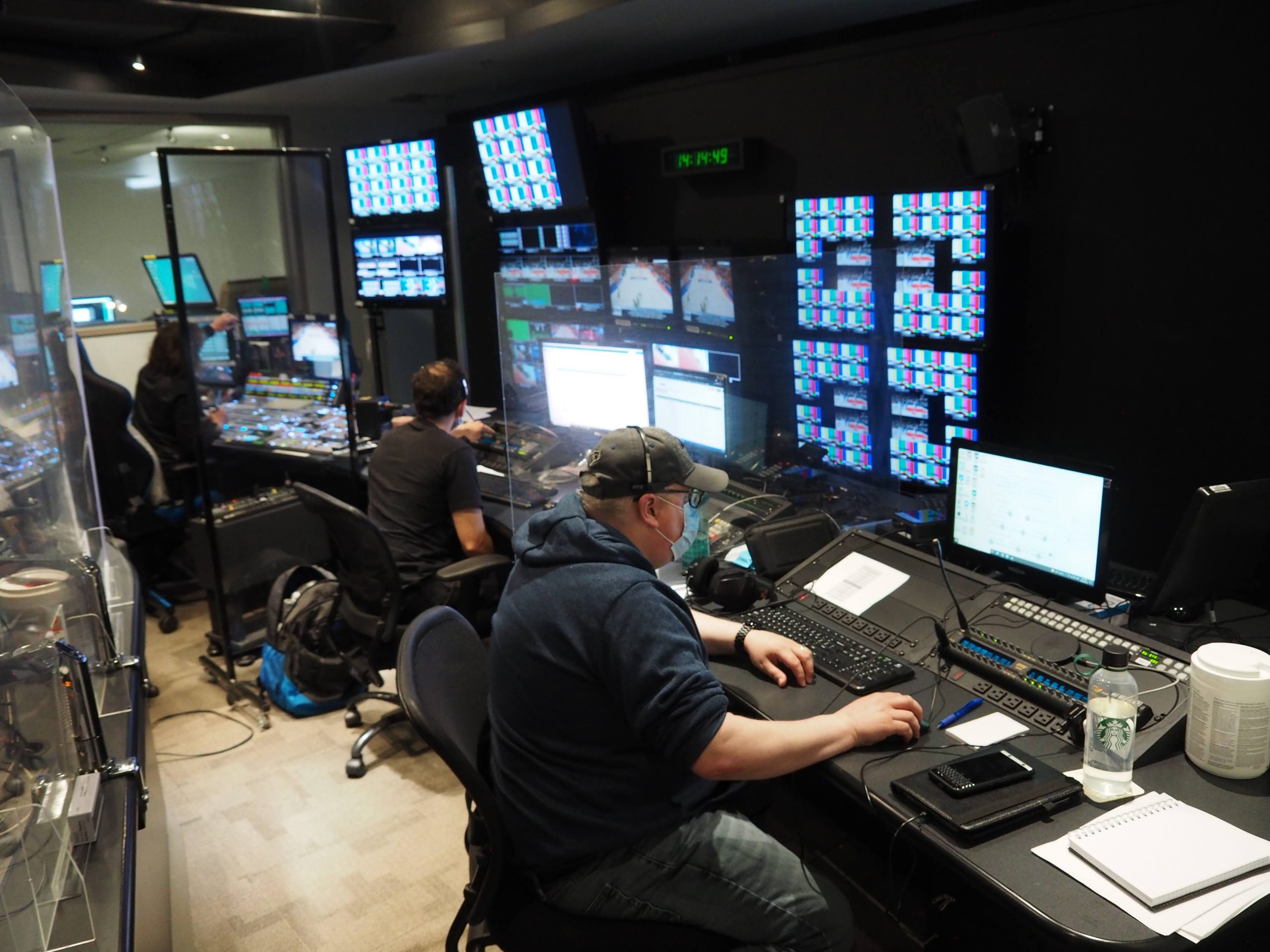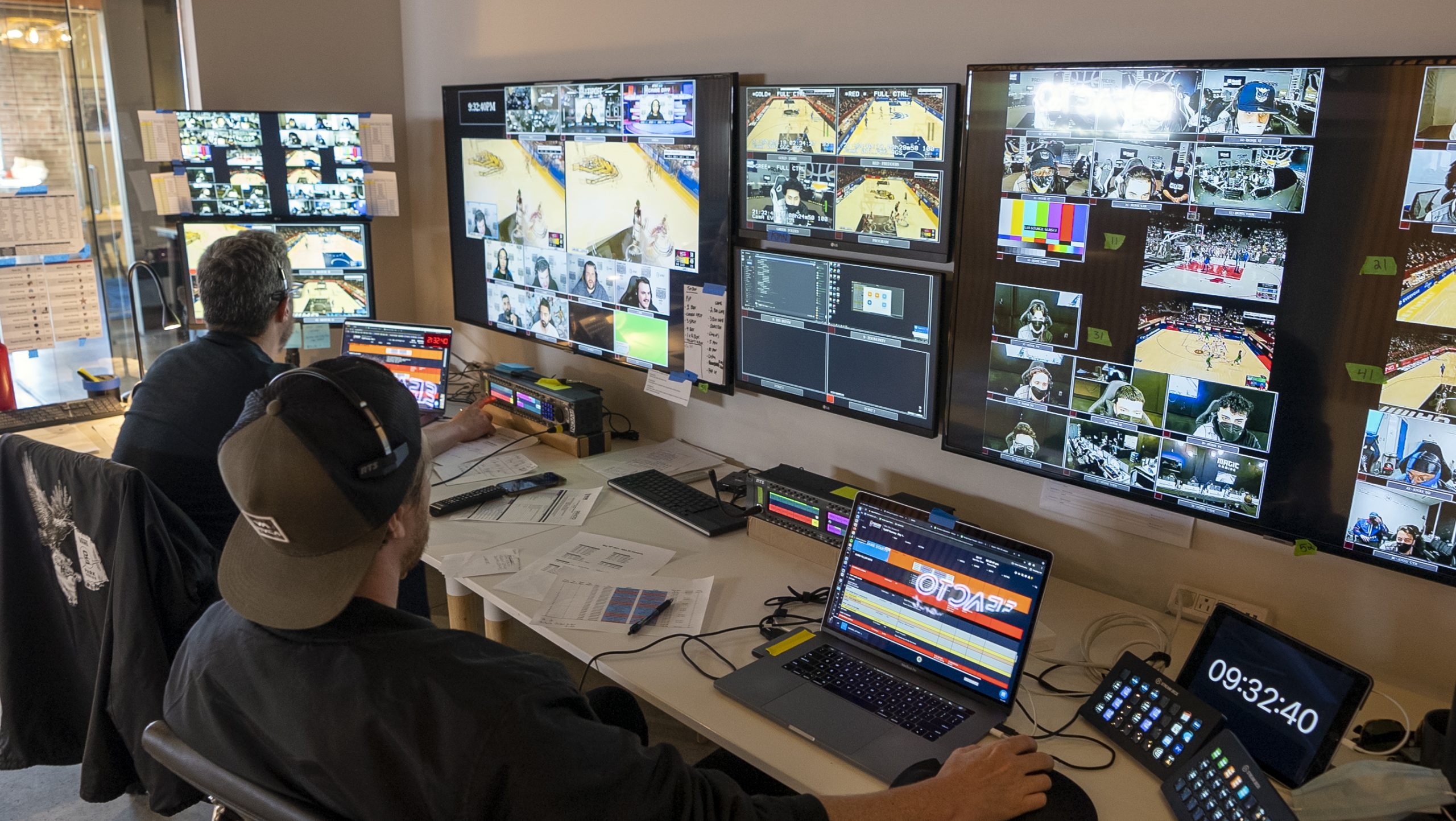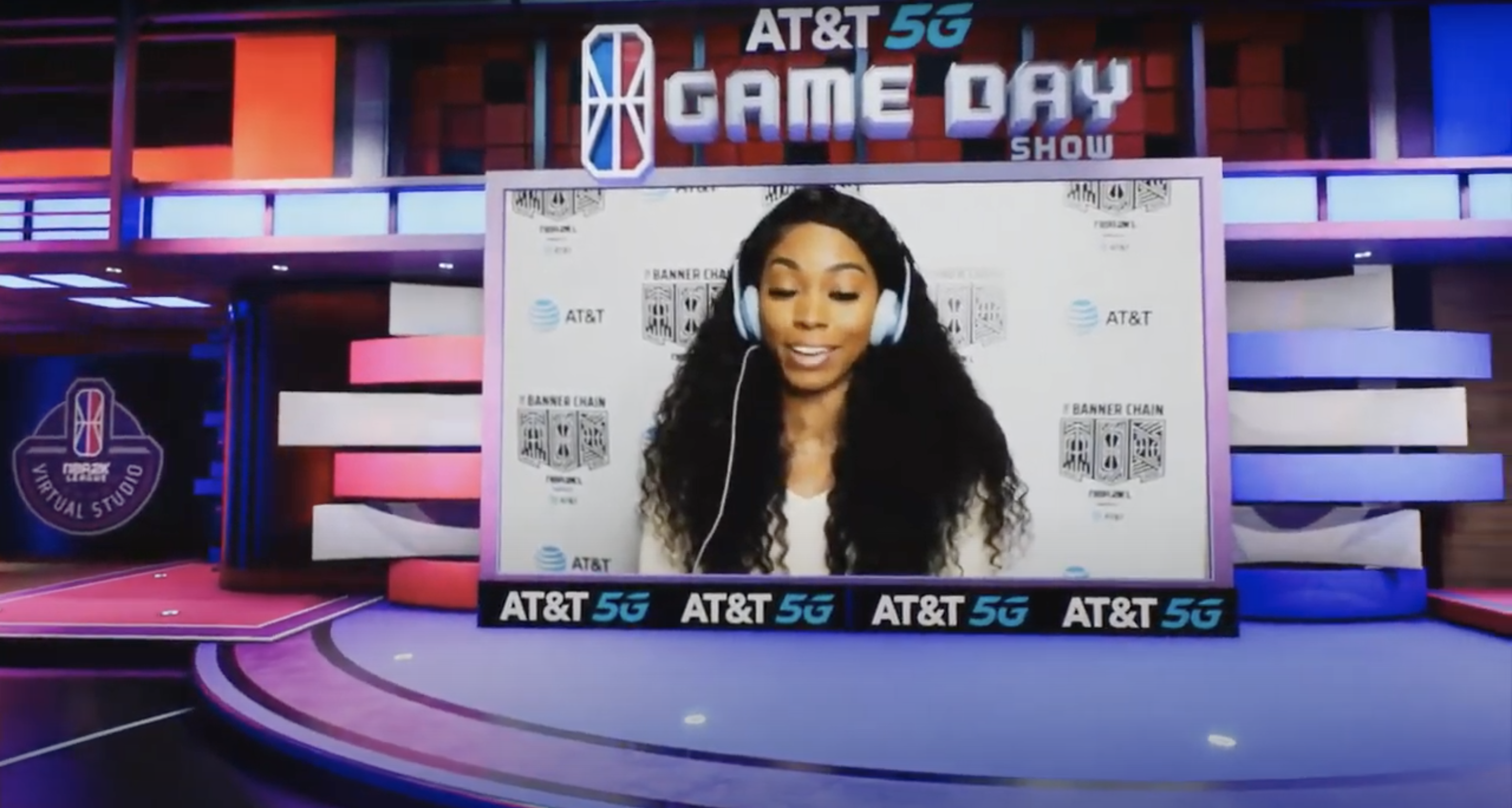NBA 2K League Migrates REMI Workflows to the Cloud for Season 4
Online gameplay continues, with Defacto Entertainment and Dome Productions playing big roles
Story Highlights
Last March, just weeks before tipoff, the NBA 2K League’s third season was postponed due to the pandemic. However, the esports league rebounded quickly, returning to the virtual court in a matter of weeks, thanks to a remote-production workflow it developed with production partners Defacto Entertainment and Dome Productions. With its fourth campaign tipping off this week, NBA 2K League is going a step further and moving the REMI workflow into the cloud instead of deploying individual flypacks to all 23 of its teams.
“When COVID hit, we were one of the first to jump in and figure out a [remote] workflow,” says Matt Arden, head of content and media, NBA 2K League. “We had a patchwork of things that we knew would work, but it wasn’t necessarily a perfect solution. This year, we’re focused on refining the REMI workflow that we deployed last year and upgrading a number of production elements. We further refined the hub-and-spoke model by moving away from flypacks and pushing more services into the cloud.”
Tech Challenge: Moving to the Cloud While Upgrading to 1080p
At the end of last season, Arden and company were looking to take more of the technical load off the NBA 2K League teams, who had had to set up and manage their own flypacks. In addition, because all 23 teams will compete exclusively on Sony PS5 consoles this season, the league was looking to upgrade the entire broadcast pipeline from 720p to 1080p to be more game-console ready.
“We wanted to push more services into the cloud and also get to 1080p,” says Arden. “That’s no small feat when you think of the number of players, teams, and simultaneous matches we have. Teams are now providing their own contribution camera and gameplay signals for the broadcast, which allows us not only to lighten their pregame load but to activate teams on much shorter notice. Should there be tournaments or celebrity games or any other special event in the future, it allows us to just plug-and-play rather than sending out flypacks every time we want to do something special.”
To make this all possible, Defacto created its own cloud-based production ecosystem based on a mix of Azure and AWS instances. The workflow leverages vMix, OBS, and a custom code for NDI video transmission within the cloud, with SRT feeds going in and out of the main master control at Dome Productions’ network-operations center (NOC) in Toronto. In addition, the cloud system is running the independent feeds that will populate Twitch Command Center.
“It’s still a hub-and-spoke model like we had last year,” Arden explains, “but the hub became a lot more user-friendly for teams, and we made a full switch to cloud. We didn’t have time to investigate deeply last year considering the six-week timeframe we had [for relaunch]. But, with a [full off-season] this year, we were able to figure out how to push a lot to the cloud.”
Inside the Workflow: A New Hub-and-Spoke Model
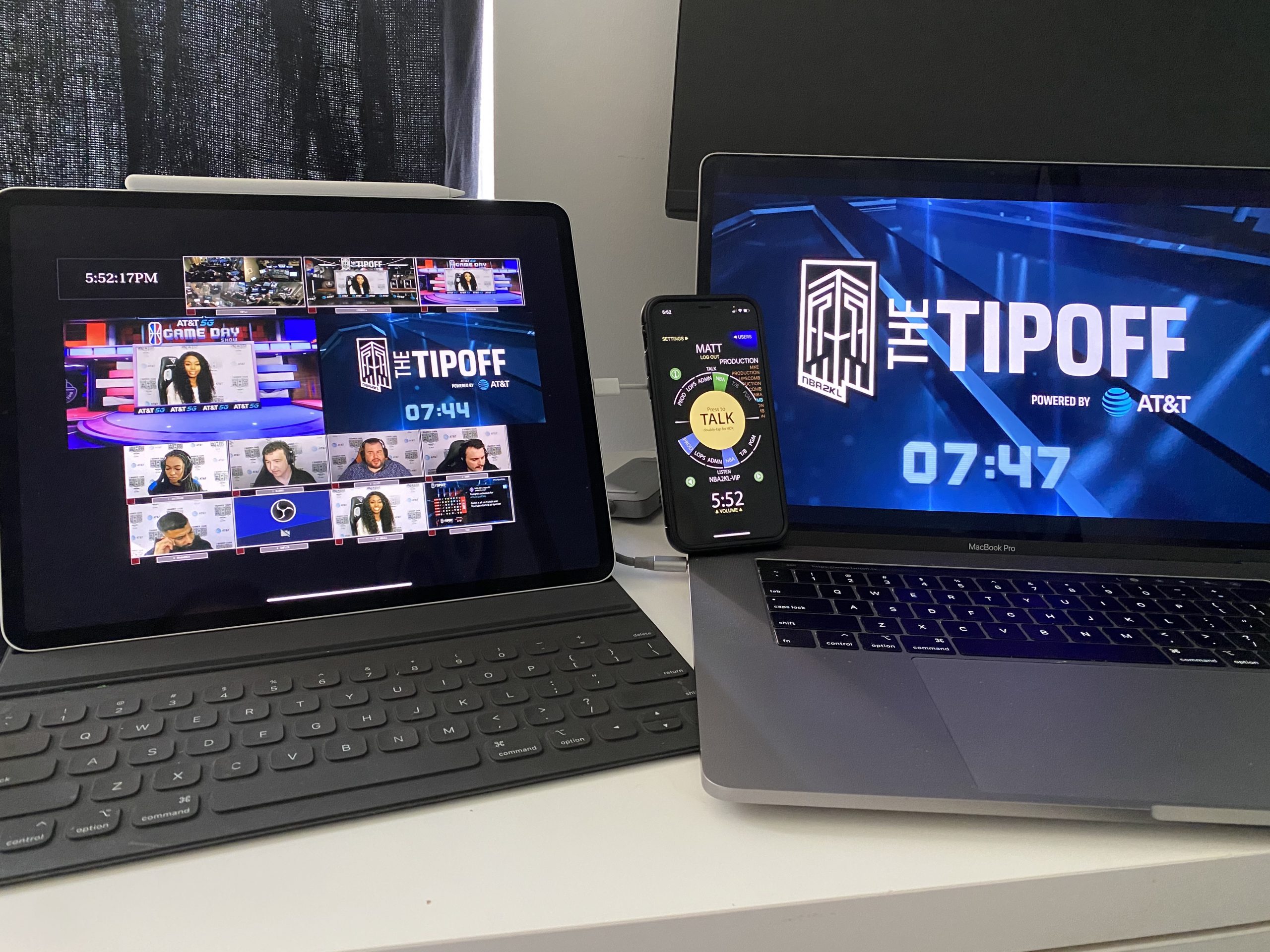
Matt Arden’s at-home setup consisting of PlayPro on iPad Pro, Unity comms on iPhone 12, and Monitor Twitch and YouTube on MacBook Pro
Under the new online-competition workflow, NBA 2K gameplay feeds from each matchup are routed through an on-site computer and Elgato HD60S consumer capture cards (Elgato HD60S). The broadcast team remotes into these systems and feeds the gameplay signal back to Dome master control as an SRT feed encoded with OBS Studio.
Teams have set up their own USB webcams for player POV and facility camera angles. These feeds are sent to master control via a proprietary tool that leverages a WebRTC video connection.
Defacto’s engineering team is able to manage all camera and mic settings from its Vancouver HQ facility with minimal interaction with teams, except for initial physical placement of the camera angles.
Dome Productions’ NOC in Toronto is again a key component in NBA 2K League’s REMI production model. The main control room, Suite One, has undergone significant upgrades to bring the production infrastructure in line with a full 1080p workflow for Season 4.
In Vancouver, Defacto also has a significantly improved producer setup with full-scale comms and video monitoring tied directly into the master-control infrastructure in Toronto. From there, the production team directly controls all the virtual-studio moves, command-center feeds, and talent switching via VPN, with hardware in Toronto and the cloud and physical control in Vancouver.
“I’m truly amazed at how far we’ve come since last season,” says Arden. “We have an incredible team, and I’m surrounded by the smartest, most efficient people in the business. There’s nothing this team can’t do. If someone called me tomorrow and said, ‘We’re going to try to do it from the moon,’ I think our team would find a way to do that. I just don’t believe that you can put a problem in front of us that we can’t solve.”
Theme Nights: Bringing More Fun Into the Broadcast
In addition to the technical advances, Season 4 of NBA 2K League also features new production elements and features. Most notably, regular-season broadcasts will feature nightly themes:
- “NBA 2KL Block Party Wednesdays” highlights voices around the NBA 2K League community, including influencer personalities.
- “NBA 2KL Bounce Pass Thursdays” is the league’s fastest-paced night of gameplay, packing all four matchups into a three-hour window. As many as three games will happen simultaneously, and the broadcasts will bounce around to highlight the most exciting action.
- “NBA 2KL Friday Night Fire” will spotlight the week’s marquee matchup with the Game of the Week and dive deep into the stories of the league’s 138 players with never-before-seen content and interviews.
- “NBA 2KL Saturday Night Showdown” will explore new broadcast elements and voices and focus on the hardcore 2K fans by showcasing compelling storylines, including rivalries between individual players and teams.
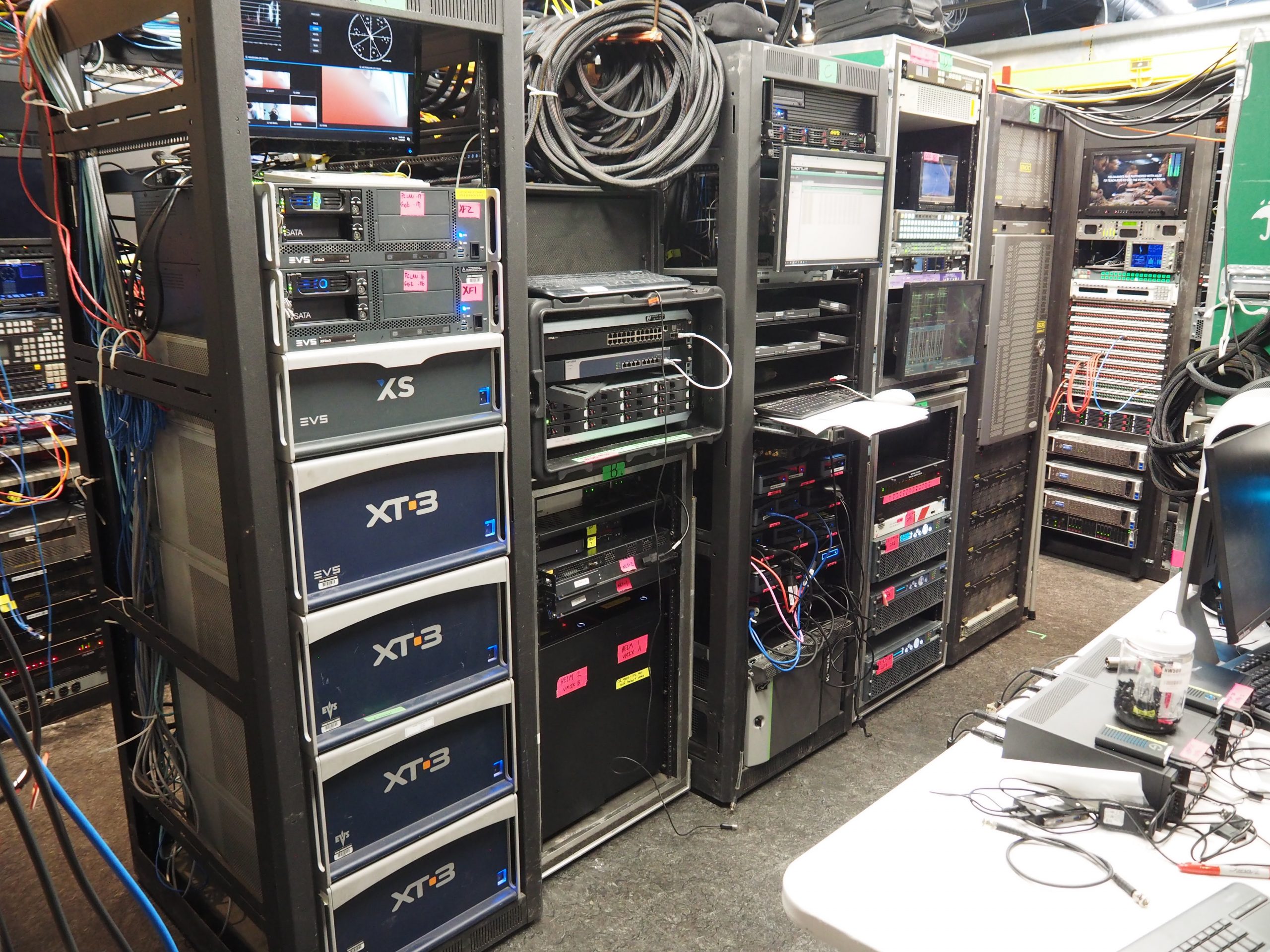
Dome Productions has dedicated resources in its equipment room in Toronto to NBA 2K League productions
“We’re looking to bring more fun into the broadcast this year with these theme nights, especially after such a heavy year last season,” says Arden. “We’re looking to have more fun and smile a lot more because the fact that these guys are actually playing 2K for a living is pretty great, and we want to share that joy and passion with the fans.”
Noting that there are no official plans yet for a return to in-person events, he adds that the league is constantly monitoring the latest CDC protocols and evaluating a potential return to LAN events. He expects the first in-person play to be around a major tentpole event or one of the league’s in-season tournaments (The Tipoff, The Turn, The Ticket), instead of a full return during regular-season play.
“We’re definitely poised to take advantage of any opportunity that presents itself, because we still believe in our live experience,” he says. “In the summer, if things open up and people are getting vaccinated, we’ll certainly look at every possibility to get our players back in the room together, especially around a tentpole event. But paramount to this whole process is player and crew safety, so we want to be smart. But should they tell us tomorrow we can do [in-person events], the day after, we’ll be ready to roll.”
The NBA 2K League tipped off its 16-week season on Wednesday with The Tipoff Powered by AT&T, which continues tonight at 6 p.m. ET on Twitch and YouTube Gaming.
